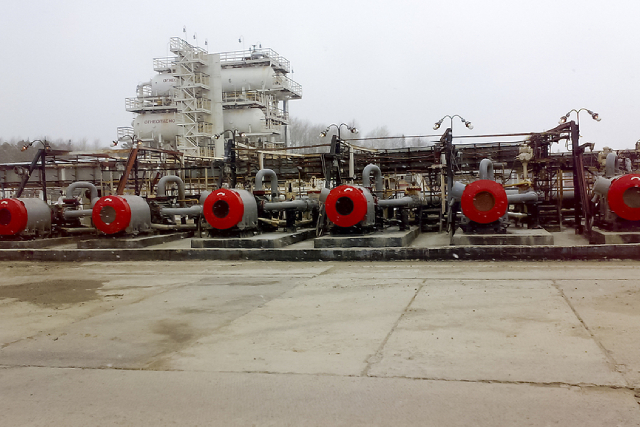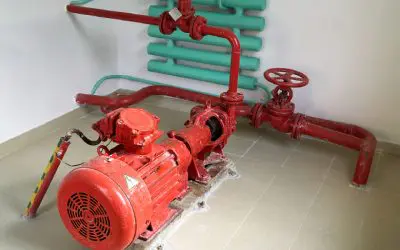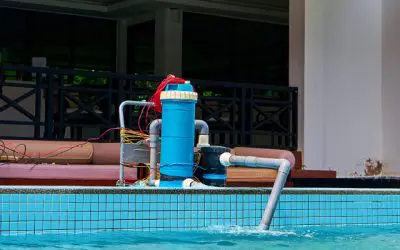
Before a centrifugal pump can function as intended, it must first be primed—a preparatory action that is not just routine but essential. Improper or neglected priming is one of the most common causes of pump malfunction, contributing to inefficiencies, equipment damage, and unplanned downtime.
Despite being relatively cost-effective compared to other types of pumps, centrifugal pumps can become a costly liability if not operated correctly from the outset. As such, we go over the details as to why priming matters, the conditions under which it’s required (or not), and a comprehensive step-by-step guide to properly priming your pump for safe and efficient operation.
What Is Priming in Centrifugal Pumps?
In simple terms, priming refers to the process of removing air from the pump and suction line and replacing it with the liquid that the pump is meant to move. Since centrifugal pumps cannot handle air or gases effectively, they require the impeller and casing to be fully flooded with fluid before the pump is started.
When air is present, it interrupts the vacuum seal necessary to create suction. Priming displaces this air, allowing a continuous column of fluid to flow from the source into the pump, through the impeller, and onward into the system. Depending on the setup, this process may be done manually or automatically using built-in mechanisms.
One key component in some pump designs is a priming chamber, which facilitates air removal and vacuum creation. This chamber allows for a smoother and more reliable priming process by ensuring that the required liquid volume is present before the impeller begins to rotate at high speeds.
Why Priming Is Crucial
Neglecting to prime a centrifugal pump can result in a cascade of operational failures, some of which may require costly repairs or replacements. Below are the key reasons why priming is indispensable:
- Prevents Air Lock: Trapped air in the casing can prevent the impeller from building sufficient pressure, essentially rendering the pump useless.
- Avoids Overheating: A dry pump can overheat rapidly, causing damage to the impeller, shaft seals, and bearings due to the lack of lubrication and cooling.
- Ensures Proper Lubrication: Fluid inside the pump plays a critical role in lubricating internal components. Without it, wear and tear accelerate significantly.
- Improves Efficiency: A well-primed pump consumes less energy, operates at optimal performance, and extends the equipment’s lifespan.
- Prevents Cavitation: Inadequate priming may lead to cavitation, wherein vapour bubbles form and collapse inside the pump, damaging the impeller and reducing efficiency.
- Critical for Emergency Systems: Applications like firefighting or emergency irrigation systems cannot afford any delays. Proper priming ensures the system is ready to go immediately.
When Is Priming Not Required?
While priming is essential for many centrifugal pumps, some configurations do not require manual priming under certain conditions:
Self-Priming Pumps
These pumps are engineered to re-prime themselves automatically. Built with a fluid reservoir and air-separation mechanisms, they create the necessary vacuum without external intervention. Self-priming designs are ideal for applications where the pump may need to restart frequently or be situated above the fluid source.
Submersible Pumps
As the name implies, these pumps operate while fully submerged in the fluid they are designed to move. Since they are already immersed, air pockets are minimal or non-existent. A one-time initial prime may be needed, but regular priming is generally not required.
Gravity-Fed Systems
In systems where gravity pushes the liquid into the pump—such as in hydroelectric setups or tank drainage systems—priming is often unnecessary because the suction line remains naturally filled with fluid. However, it’s still advisable to verify there’s no air trapped initially.
Diesel Pump Applications
Many diesel pump systems used in dewatering or irrigation come with integrated priming features or are designed for submersible or gravity-fed setups. That said, operators should never assume priming isn’t required, and manual inspection is always a good practice before each use.
How Improper Priming Affects Efficiency
The effects of poor priming practices go beyond just short-term performance issues. Over time, these inefficiencies can compound, especially in large-scale operations. For instance:
- The presence of air in the pump impedes flow, reducing the total output of the system.
- The pump motor may need to work harder to overcome resistance, increasing power consumption.
- The increased energy demand can be significant enough to skew an energy audit in Singapore or other regulated regions, where energy use benchmarks must be adhered to for sustainability or compliance goals.
- Regularly operating a pump without proper priming may also void warranties or lead to unplanned outages, both of which have long-term financial implications.
Understanding and implementing proper priming procedures is not just a maintenance best practice but a necessity for cost-effective operations.
Preparations Before Priming: What Needs to Be Checked
To ensure effective priming, certain preparatory steps must be completed. These checks are critical to avoid complications once the pump is turned on.
1. Inspect and Clean the Pump
Begin with a full visual and manual inspection of the pump casing, impeller, seals, and suction line. Remove any debris or sediment buildup that may obstruct fluid flow. Confirm that the suction and discharge lines are clear and structurally sound.
2. Secure All Connections
Ensure all pipe connections, particularly at the suction side, are airtight. Even minor air leaks can undermine the vacuum seal needed for priming.
3. Verify Shaft Alignment
Check that the motor and pump shaft are properly aligned. Misalignments not only increase wear and energy consumption but can also affect the vacuum pressure required for successful priming.
4. Fill the Pump and Suction Line
For non-self-priming pumps, manually fill the casing and, if possible, the suction line with the working fluid. This process, which is called wet priming, creates the necessary conditions to start suction when the pump is activated.
5. Confirm NPSH Requirements
Ensure that the Net Positive Suction Head (NPSH) available meets or exceeds the NPSH required by the pump. Failing to meet this criterion can result in cavitation, especially in high-temperature or high-elevation applications.
6. Check Auxiliary Components
If your pump uses external systems such as strainers, filters, cooling jackets, or pre-lube mechanisms, verify that these are all functioning correctly and not obstructing flow.
Step-by-Step Guide to Priming a Centrifugal Pump
Once all preliminary checks are complete, the actual priming process can begin. Follow these steps for the best results:
1. Close the Discharge Valve: This helps to trap fluid in the casing and aids in building vacuum pressure.
2. Start the Pump: Activate the motor with the discharge valve still closed. Observe the initial operation for any abnormal sounds or vibration issues.
3. Open the Discharge Valve Slowly: Gradually open the valve to allow controlled fluid movement and reduce the chance of hydraulic shock.
4. Check for Steady Flow: Use a flow meter or visual observation to ensure a consistent and uninterrupted flow of liquid.
5. Monitor Pressure Gauges: Stable pressure readings indicate that the pump has been successfully primed.
6. Adjust Speed and Settings: Fine-tune the pump controls for optimal performance.
7. Inspect for Leaks: Conduct a final leak inspection to ensure airtight integrity.
8. Keep Monitoring: Continue to observe the system during initial operation. Regular logging of pressure and flow readings can help with future diagnostics.
Conclusion
Priming a centrifugal pump is far more than a basic startup task. This process is a critical component of pump performance, safety, and system longevity. Understanding the whys and hows of priming and what precautions to take can help avoid costly downtime and premature equipment failure.
Whether your pump setup is part of an industrial operation, an irrigation system, or an emergency response unit, proper priming sets the stage for reliable and efficient fluid movement. By following best practices and maintaining vigilance, you not only extend the life of your equipment but also ensure continuous, energy-efficient operation across the board.



